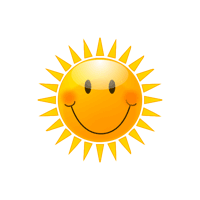New Zealand’s bold experiment with regulating re
Post# of 56324

New Zealand’s bold experiment with regulating recreational drugs
It’s been nearly a century since the United States began its experiment in prohibiting recreational drugs besides alcohol, caffeine and tobacco — and virtually no one sees the trillion dollar policy as a success. A recent study [PDF] shows that drug prices have dropped more than 80 percent in the last two decades alone; purity and availability has risen; and overall addiction and death rates haven’t been cut, despite an exponential increase in incarceration since the 1980s.
Even the hardline U.N. drug czar admitted in the annual World Narcotics Report [PDF] that “the international drug control system is floundering,” citing specifically its inability to match the speed and creativity of Internet-enabled chemists who create and distribute new legal highs like “bath salts” and “fake marijuana” faster than governments can ban them.
But one country is trying a new approach. For the first time in history, New Zealand has created a regulatory body to oversee recreational drugs. Passed by parliament this summer on a vote of 119 to 1, the legislation has already granted interim approval to over 50 products with names like “Dr. Feelgood,” “4:20,” and “Everest Tibetan Toot.”
The world should closely watch what happens next. If implemented carefully, New Zealand’s new laws offer the first genuinely scientific and public health-oriented approach to dealing with the negative aspects of humanity’s eternal quest for consciousness alteration. Anthropology tells us that getting high is universal — no culture, no matter how remote, lacks chemical experimentation.
After all, few existing U.S. drug laws were based on a medical assessment of the relative risks of alcohol, tobacco, marijuana, heroin, cocaine and others. Instead, they were derived from historical contingencies and, typically, explicit racism.
The first state laws against cocaine, for example, were passed because the drug was believed to make blacks into “fiends” who would rape white women and be impervious to bullets. The first state laws against opium made similar claims about its effects on Chinese railroad workers — and marijuana prohibition followed a scare campaign about its link with Mexicans and blacks and ability to promote violence and interracial liaisons.
By contrast, New Zealand’s new laws specify that products with “low risk” of death, other harms or addiction must be approved — and leaves it up to a scientific committee to define the precise nature and appropriate definition of “low risk.” Drugs that are already illegal will remain so, probably to avoid conflict with international law. The legislation makes no mention of benefits or efficacy, so manufacturers do not have to prove that their drugs are better than placebos.
At least six drugs have already been rejected. However, the law allowed marketers to keep selling products they have submitted for approval, if they’d already been marketed without incident for at least three months. (The rationale was that since bans cannot keep up, it is futile to add more while the approval process is starting.)
Not surprisingly, all new drugs will remain illegal for people under 18. They can only be sold at specific, licensed outlets — not convenience stores or other places frequented by youth — and must carry packaging identifying the ingredients and including health warnings about the known and potential risks. No advertising is permitted, except inside the store itself.
Will this legislation work? It’s certainly an improvement on the current system, which essentially allows new drugs to be marketed worldwide without testing. It also avoids problems with attempts — like pending legislation on which hearings were held last month in the U.S. Senate — to create blanket bans on all possible analogues of existing psychoactive drugs.
Such prohibitions not only fail to stop chemists from creating newer compounds, but also cause serious problems for healthcare. Many of these substances have potential medical uses — in fact, they are often based on information from pharmaceutical patent applications — but once they are made illegal, drug companies tend to lose interest because of the excess cost and greater risk of rejection when seeking approval. The former top adviser to the British government on drug policy, Dr. David Nutt, has compared the loss to medicine that results to the delays in scientific advancement caused by the Catholic church’s actions against Galileo and Copernicus.
In the last month alone, we’ve seen several dramatic examples of the harm caused by failure of our current policy. Two college students at a New York dance festival died from taking “Molly” (MDMA, the drug formerly known as ecstasy) of unknown provenance and purity. A drug that causes severe disfigurement — including crocodile-like skin scales, amputations and bone and muscle loss due to improper synthesis of its main ingredient — known as Krokodil, is suspected to have migrated from Russia to Arizona. And a new report showed that nearly 23,000 emergency room visits in 2011 were linked to “bath salts.”
Of course, regulation won’t make recreational drug use perfectly safe — this is already clear from our experience with tobacco, prescription drugs and alcohol. However, it also won’t add to the harm done by drugs the way incarcerating users and forcing them to rely on the vagaries of the black market does. People will always seek chemical euphoria, enlightenment and escape — so instead of locking them up and ceding the market to organized crime, we need to give them the safest possible choices and spend the money saved on enforcement on treatment and education instead.
Research shows repeatedly that providing safer alternatives — like clean needles, pharmaceutical-quality drugs and safe spaces in which to use them — improves health. By taking both advertising and gangsters out of the mix, New Zealand’s system offers a promising new way. While a drug-free world is clearly impossible, harm reduction already has decades of data behind it.
 (0)
(0) (0)
(0)